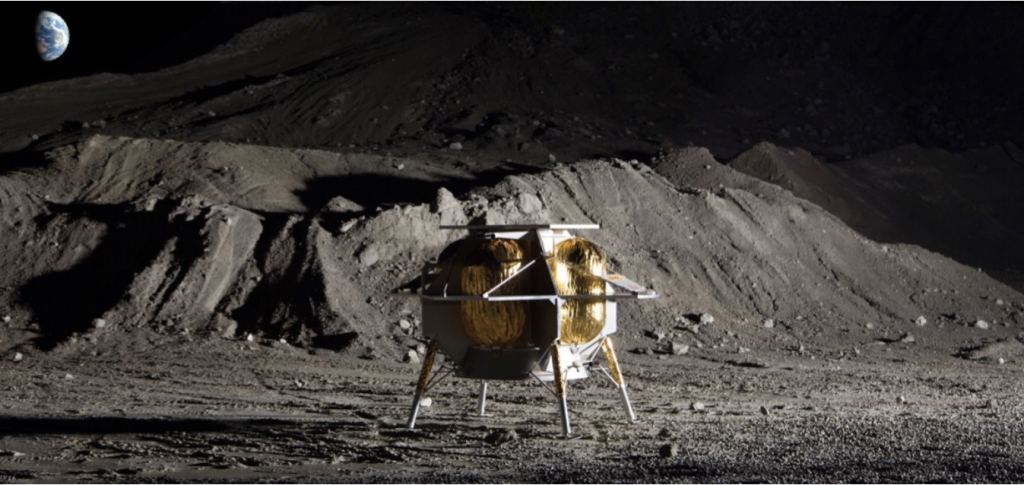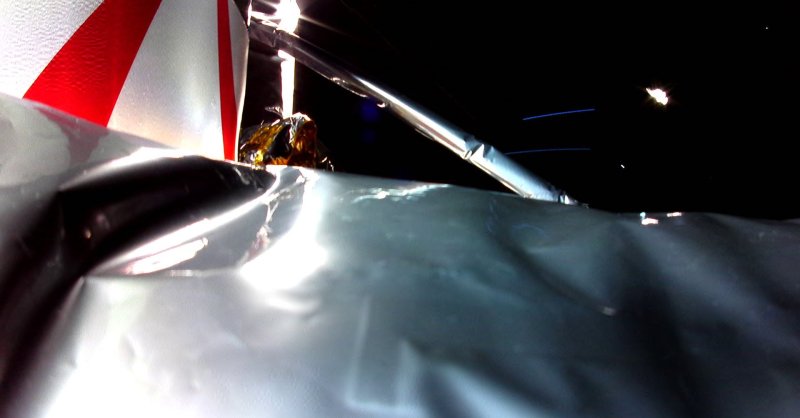It’s a real shame that spaceflight is seen as routine by the world’s media. In reality, our exploration of the Solar System is still in its infancy, problems are still seen and sadly missions do still fail. We are reminded of this with the recent launch of the Astrobotic Peregrine lander on Sunday. It was launched atop a Vulcan rocket but it soon became apparent that there was a problem with the lander propulsion system. A leak has been discovered and unfortunately there is insufficient fuel to support a soft landing on the Moon.
NASA had partnered with the US based Astrobotic company to send the Peregrine lunar lander to the surface of the Moon. The robotic lander was launched on Monday 8th January to deliver equipment to the surface, to the Gruithuisen Domes region. With an eye on the Artemis project, Peregrine was delivering scientific instrumentation that would pave the way for the Artemis III crewed landing. In addition there was instrumentation from German and Mexican space agencies along with equipment from universities and companies. One of the items was teh Japanese ‘lunar dream capsule’ that included over 180,000 messages from children around the world.

The launch on Monday seemed pretty standard. The Vulcan Centaur rocket lifted off from Cape Canaveral at 7.18am GMT. As scheduled, at an altitude of 500km, the Peregrine lander separated, 50 minutes after launch. All progressed well for the next few hours but 7 hours in and the lander was unable to properly orient its solar panels to align with the Sun. This meant the batteries were unable to charge but the team were able to rectify. Unfortunately this was just the beginning of the problems for this doomed craft.
Investigations by Astrobotic suggested the root cause was a problem with the propulusion system and a loss of propellant. The company released images to press agencies and via their social platforms e of the outer layers of the insulation that showed it was wrinkled. Further investigations revealed that the fuel leak was impacting the ability of the thrusters to control the attitude of the craft.
The Astrobotic social profiles posted an update on Wednesday at around 16:00 GMT to advise that it had been operational for a total of 55 hours and has travelled 80% of the distance of the Moon. Peregrine is not on a direct course to the Moon though, it has to swing back around the Earth before it would finally cruise to the Moon.
The planned lunar landing would take place 15 days from launch. The propellant however continues to leak and is forecast to run out in 35 hours time. This will unfortunately not be enought time to reach the Moon although the team are working to try and extend the life of the system. Astrobotic confirm that they will not be able to land on the Moon and so, assuming this is indeed how it plays out, Peregrine will end up as an expensive piece of space debris floating through space for all time.
Source : Astrobotic Social Media Feed


This is a real disaster for the parties involved, and another setback for the approach of using private companies in the space program. All too often, the result is financial disaster for the companies due to the lack of any return on the huge investment necessary to support spaceflight. Talk about sunk costs! It’s a subject for another article, but isn’t it time to rethink the private spaceflight model? NASA, for all its redundancies and delays, and the fragility of funding from a dysfunctional Congress, has a much better track record.
I also have a question. Is there any hope of salvaging the costly lander and science experiments that remain, presumably undamaged, on the spacecraft? I gather not – that we lack the capability of capturing the payload. Of course, they said we lacked the technology to fix the Hubble. It’s galling to have a fully-capable lunar lander endlessly orbiting the Earth.